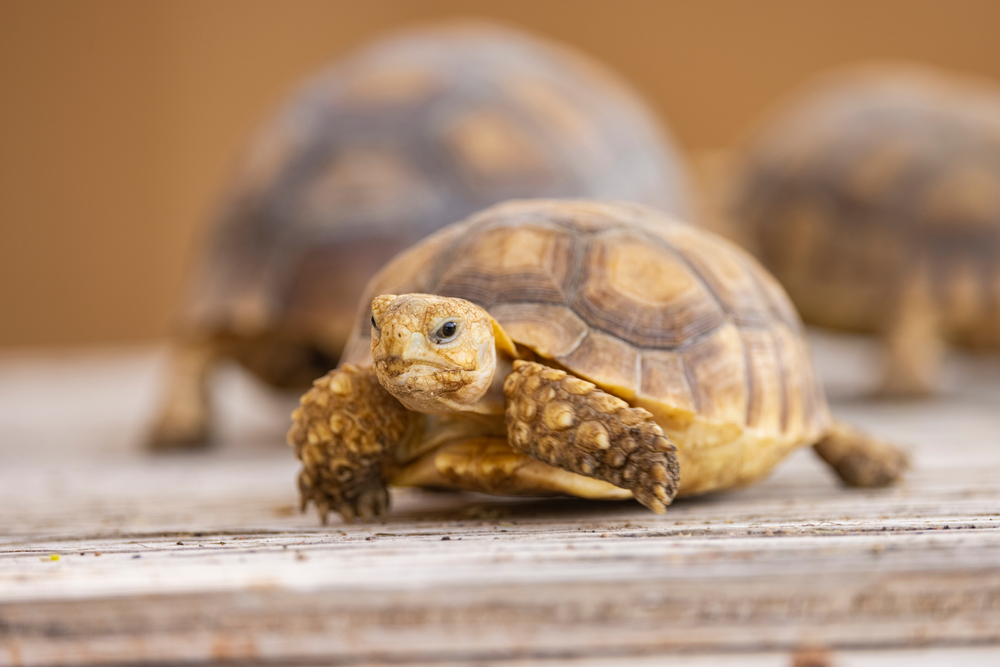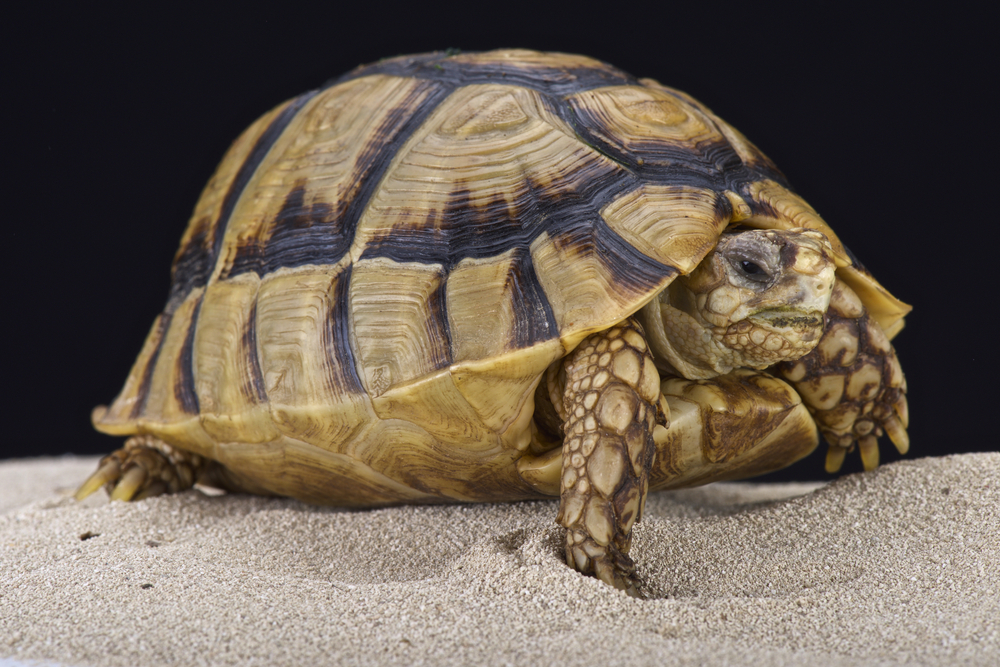Testudo kleinmanni is the smallest species in the Testudo genus. Sometimes referred to as the “Kleinmann’s” or “Leith’s” tortoise, the species is most known as the “Egyptian tortoise.” This Critically Endangered species was once found across Egypt, Libya, Israel and Palestine. However, it is now restricted to a few coastal regions of Egypt and Libya. This is partly due to rampant overcollection for the pet trade in the 80s and 90s and therefore, every concerted breeding effort may be valuable for the preservation of this species.

Egyptian Tortoise husbandry
Coming from arid coastal areas of the Middle East, the Egyptian tortoise is quite cold-tolerant in captivity, opting to aestivate if temperatures get too hot (+35℃). In fact, the Egyptian tortoise may be the only temperate tortoise species that increases its activity in winter and decreases in summer.
17 – 24℃ is reported to be an optimal winter ambient temperature with access to a basking spot of around 32℃. In summer, the basking spot can be increased above 38℃. However, this may result in animals going into aestivation which, unlike hibernacula, is difficult to maintain consistently for several months. This leads some keepers to maintain a steady climate year-round and reportedly has no ill effects.
Enclosures should be large enough to allow the animals to explore but, given their small size, is perhaps more manageable than the enclosures of other Testudo species. There are suitable indoor and outdoor options, but given that the Egyptian tortoise occupies habitats further removed from European gardens, a combination of the two is likely to be best.
Egyptian tortoises mate in the Autumn and lay their clutch in Spring. Interestingly, the clutches are extremely small and usually consist of just one egg (but up to four). Incubation can take up to four months and hatchling tortoises can live up to 100 years old!
